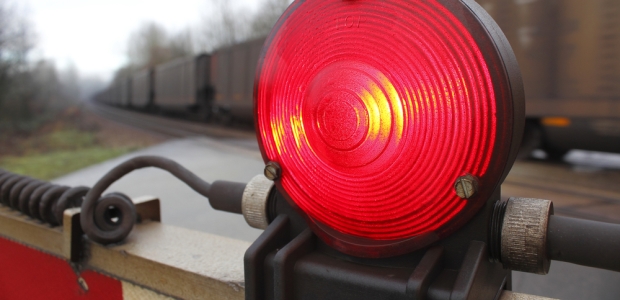
FRA Grants to Upgrade Rail Crossings on Energy Routes
Nearly $10 million in grants was awarded to state departments of transportation in Washington state, California, North Dakota, Wisconsin, Minnesota, Illinois, Arkansas, and Louisiana.
The Federal Railroad Administration announced it has awarded nearly $10 million in grants for nine projects in eight states to upgrade railroad crossings along energy routes. The money is provided under the Railroad Safety Grants for the Safe Transportation of Energy Products by Rail Program; FRA received 34 eligible applications requesting $50.8 million in all, five times more than it had available for the program.
"These grants will reduce accidents and fatalities at railroad crossings and help modernize our nation's rail system," said U.S. Transportation Secretary Anthony Foxx. "Through a combination of these grants, education, and enforcement, we can and will achieve our goal of preventing accidents and deaths at railroad crossings."
The grants are going to state DOTs in Washington state, California, North Dakota, Wisconsin, Minnesota, Illinois, Arkansas, and Louisiana. "One of FRA's top priorities during the last year has been to reverse the uptick in fatalities at railroad crossings, because most of these collisions and deaths are preventable," said FRA Administrator Sarah E. Feinberg. "Today's grants will upgrade the warning systems at critical crossings and close others where crude oil and other energy products are transported."
FRA in 2015 launched a campaign that includes partnering with Google and other tech companies to use FRA data that pinpoints the country’s 200,000 railroad crossings and adds visual and audio alerts to map applications. The agency has worked with local law enforcement to increase enforcement around railroad crossings; in 2014, 267 people died collisions at U.S. rail crossings.
Some of the projects aided by the grants include these:
- Arkansas Department of Transportation: North End Avenue in Paragould, Ark.: $292,000 to install flashing lights and crossing gates at the crossing, which currently just has cross bucks; Greene County Road 818 northeast of Paragould: $190,000 to install flashing lights and crossing gates at the crossing that currently just has cross bucks.
- California Department of Transportation: Rice Avenue in Oxnard: $1.5 million to complete design work to separate Rice Avenue from the railroad tracks.
- Illinois Department of Transportation: 95th Street at Eggleston Avenue in Chicago: $1.25 million to fund the preliminary design and engineering costs for an overpass to separate Union Pacific's double-track main line from motor vehicle traffic.
- Louisiana Department of Transportation: six miles from North Street to Louise Street in Baton Rouge: $1.1 million to upgrade nine crossings with gates and lights and to close six crossings. (Since 2000, there have been 11 accidents that have resulted in four injuries along this corridor in Baton Rouge; in 2014, Louisiana ranked in the top five states for fatalities at railroad crossings with 13 deaths.
- Minnesota Department of Transportation: Humboldt Avenue in Minneapolis: $716,000 to upgrade the 37-year-old signal system and add medians at the Humboldt Avenue Crossing.
- North Dakota Department of Transportation: $1.03 million to improve seven crossings with lights and gates and close one crossing.
- Washington State Department of Transportation: near Vancouver: $900,000 for the Ridgefield Rail Overpass Project to close the Mill Street and Division Street crossings, build a 500-foot bridge overpass, construct 1,000 feet of new road, and finance signal work.
- Wisconsin Department of Transportation: Waukesha County: $3 million to improve 10 crossings and create one pedestrian crossing as part of the Waukesha County Sealed Corridor Project along 10 miles of Canadian Pacific's mainline.
DOT has taken several other actions in the past two years to increase the safety of oil and energy products transported by rail and also has required that railroads transporting crude oil notify State Emergency Response Commissions of the movement of crude oil through individual states.